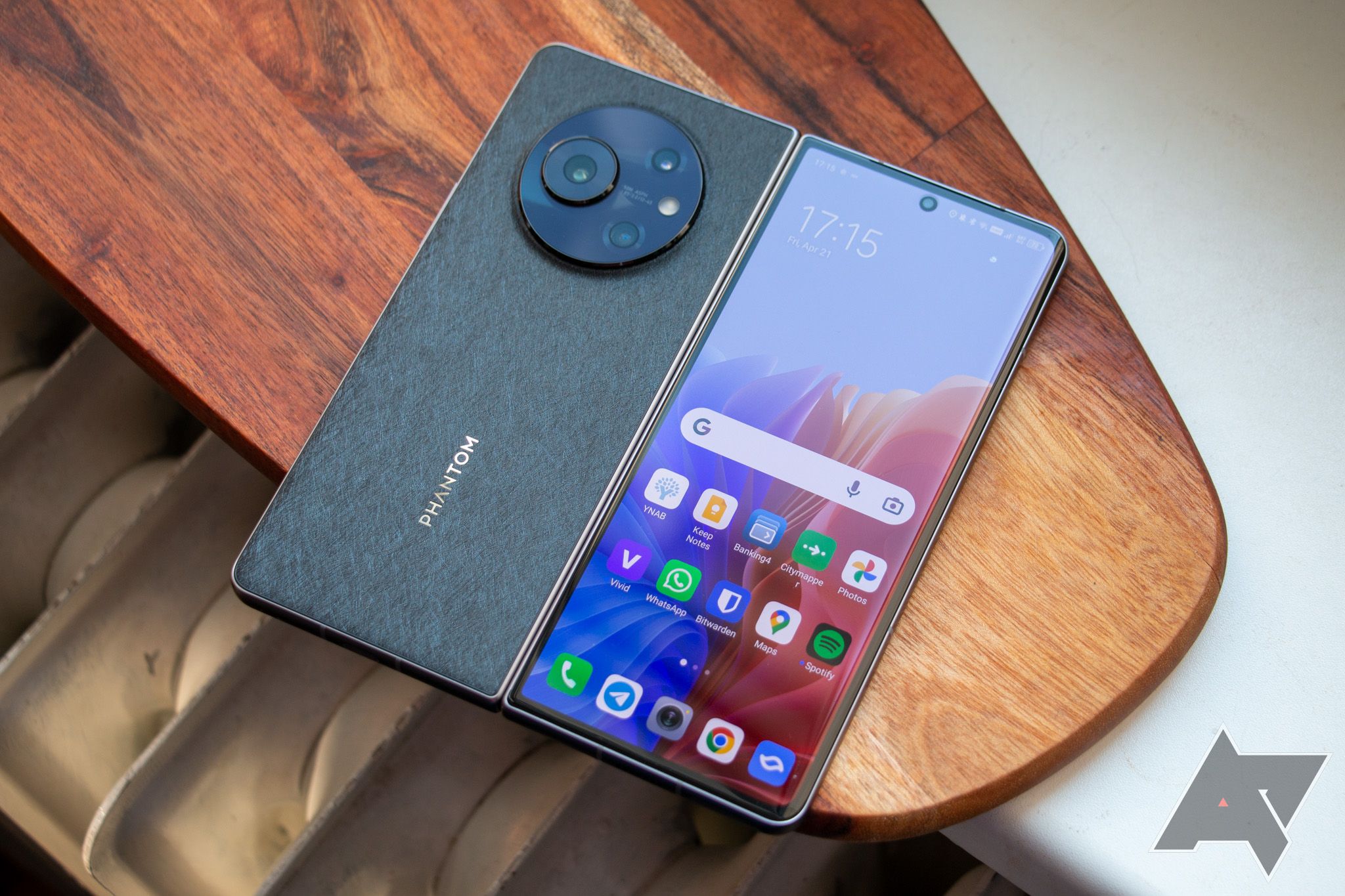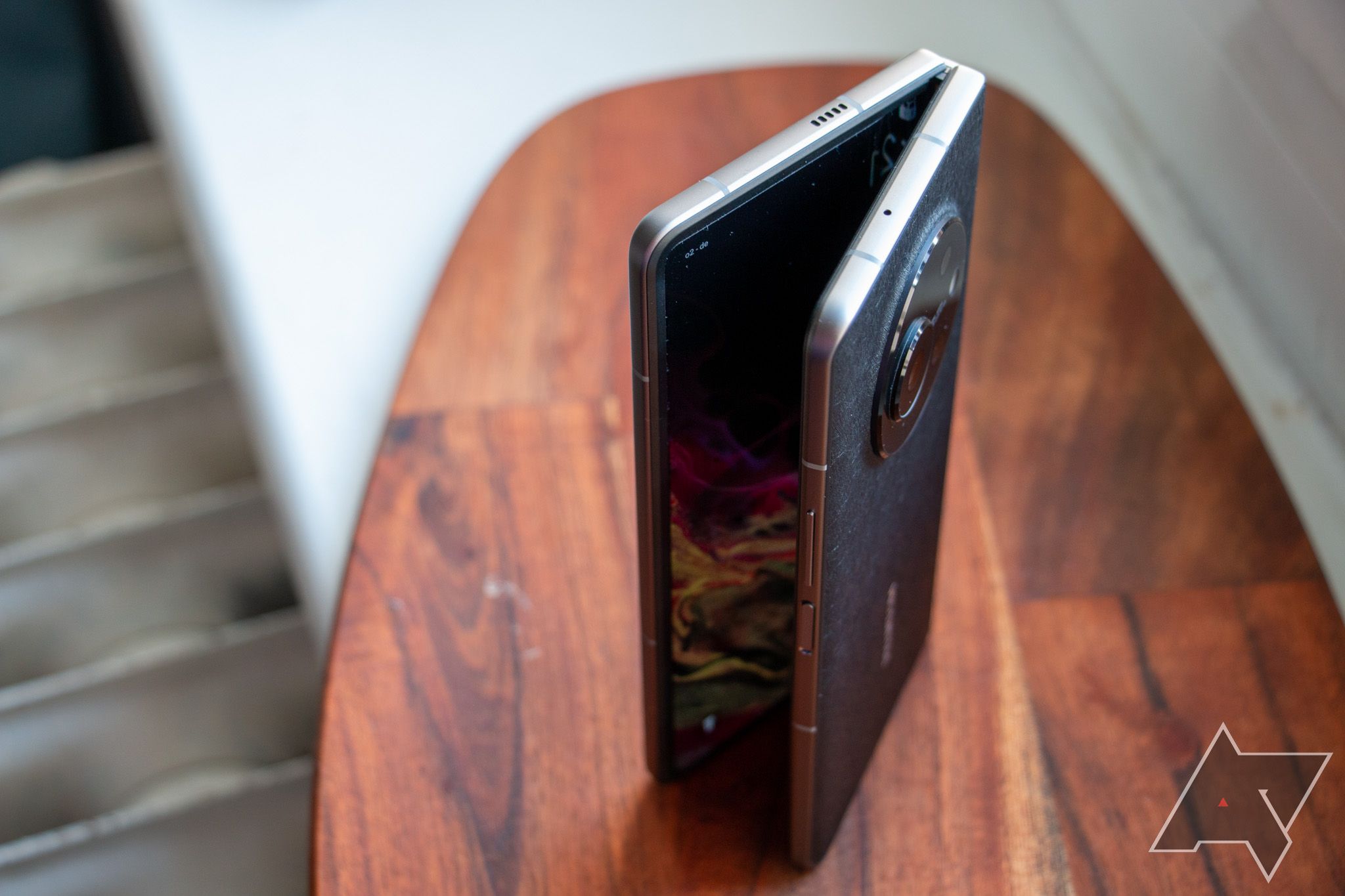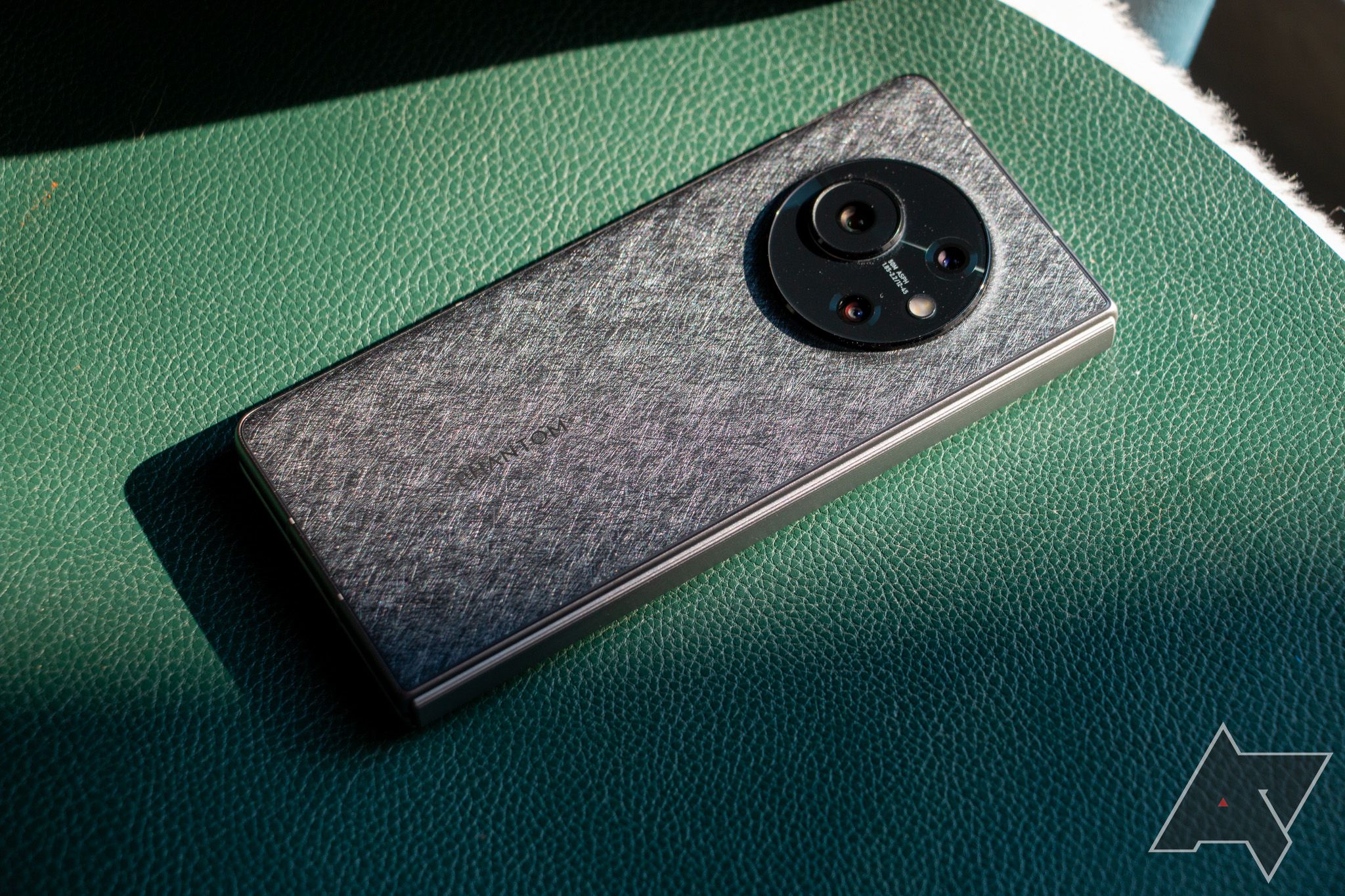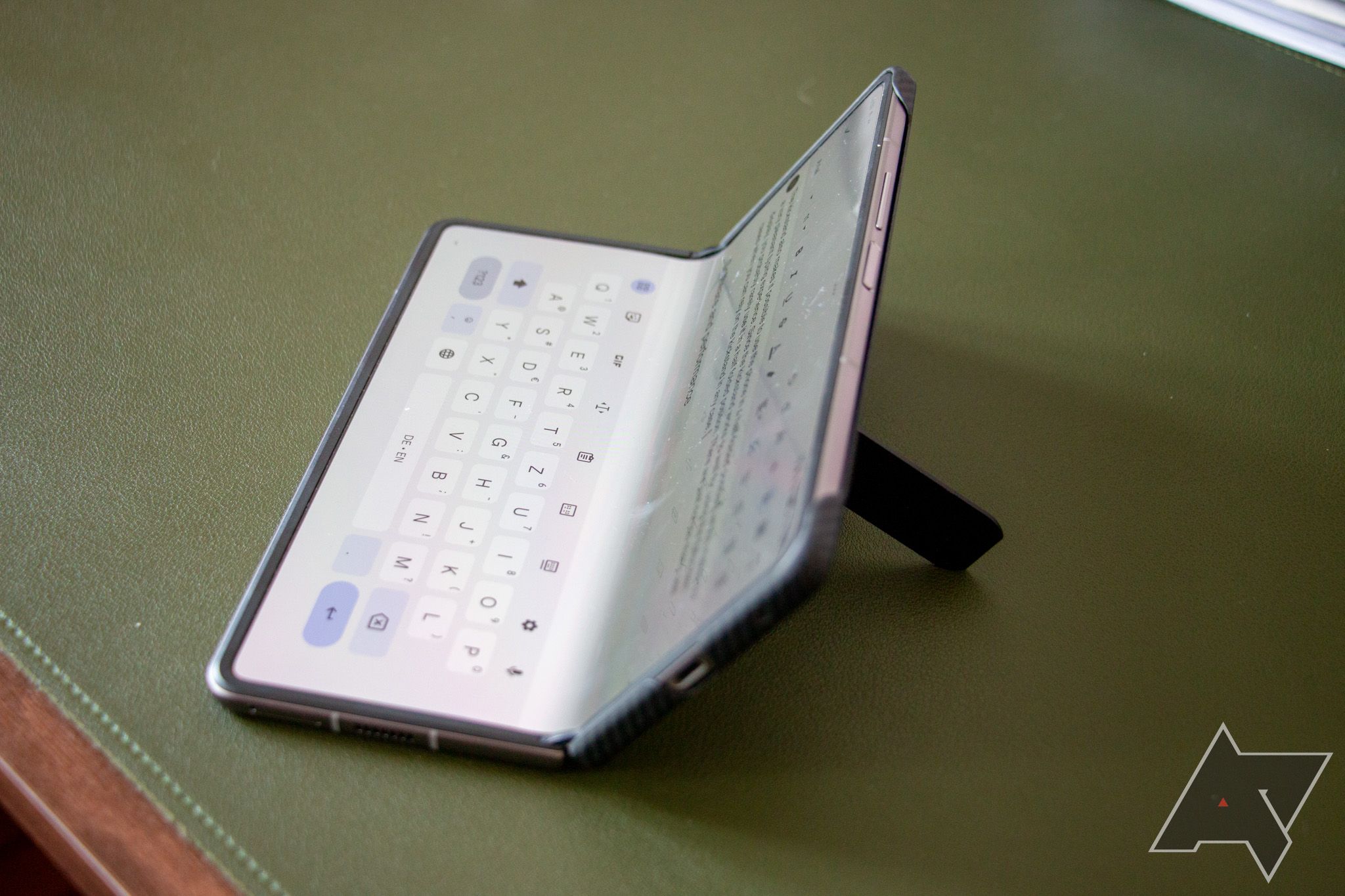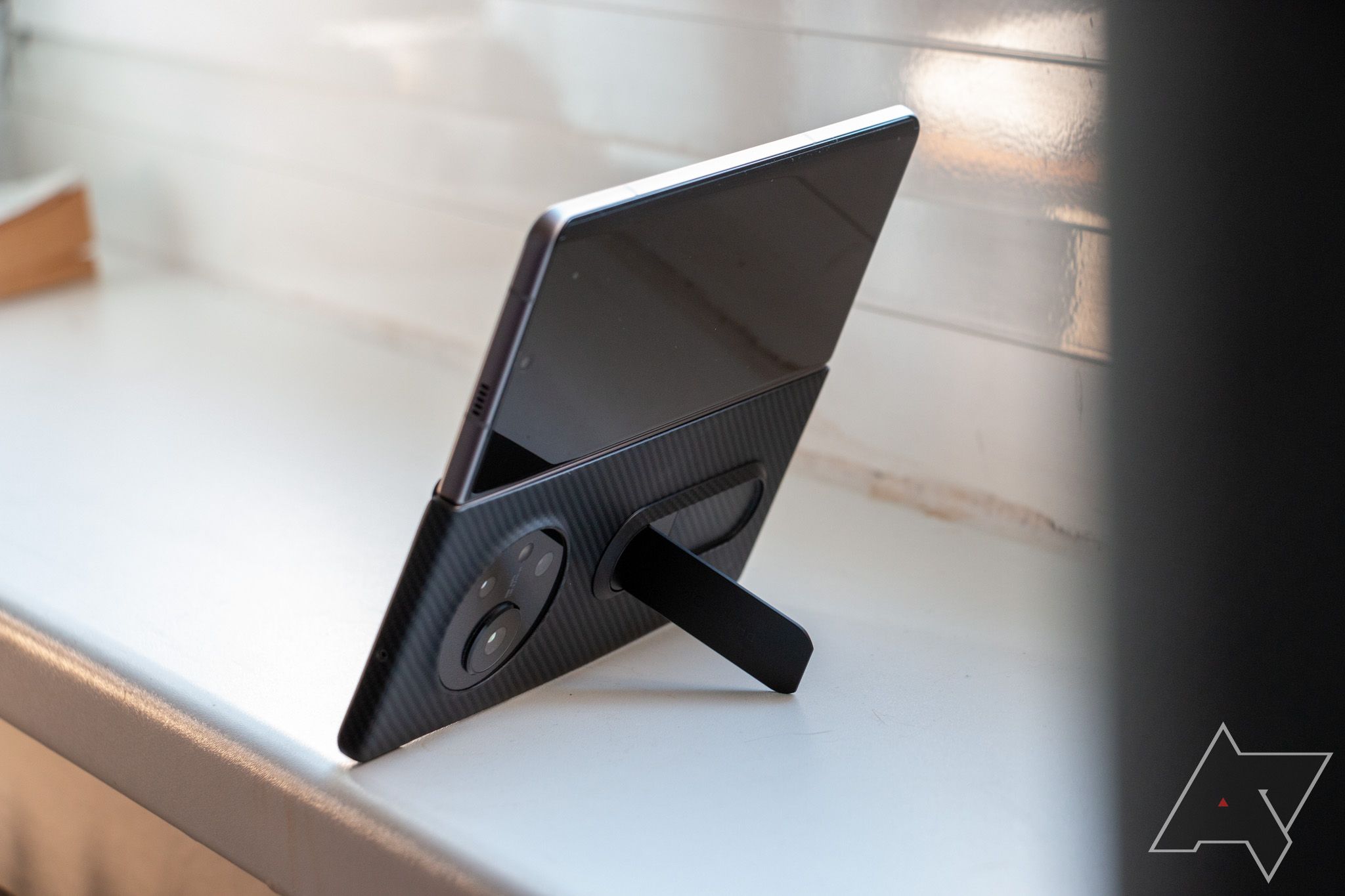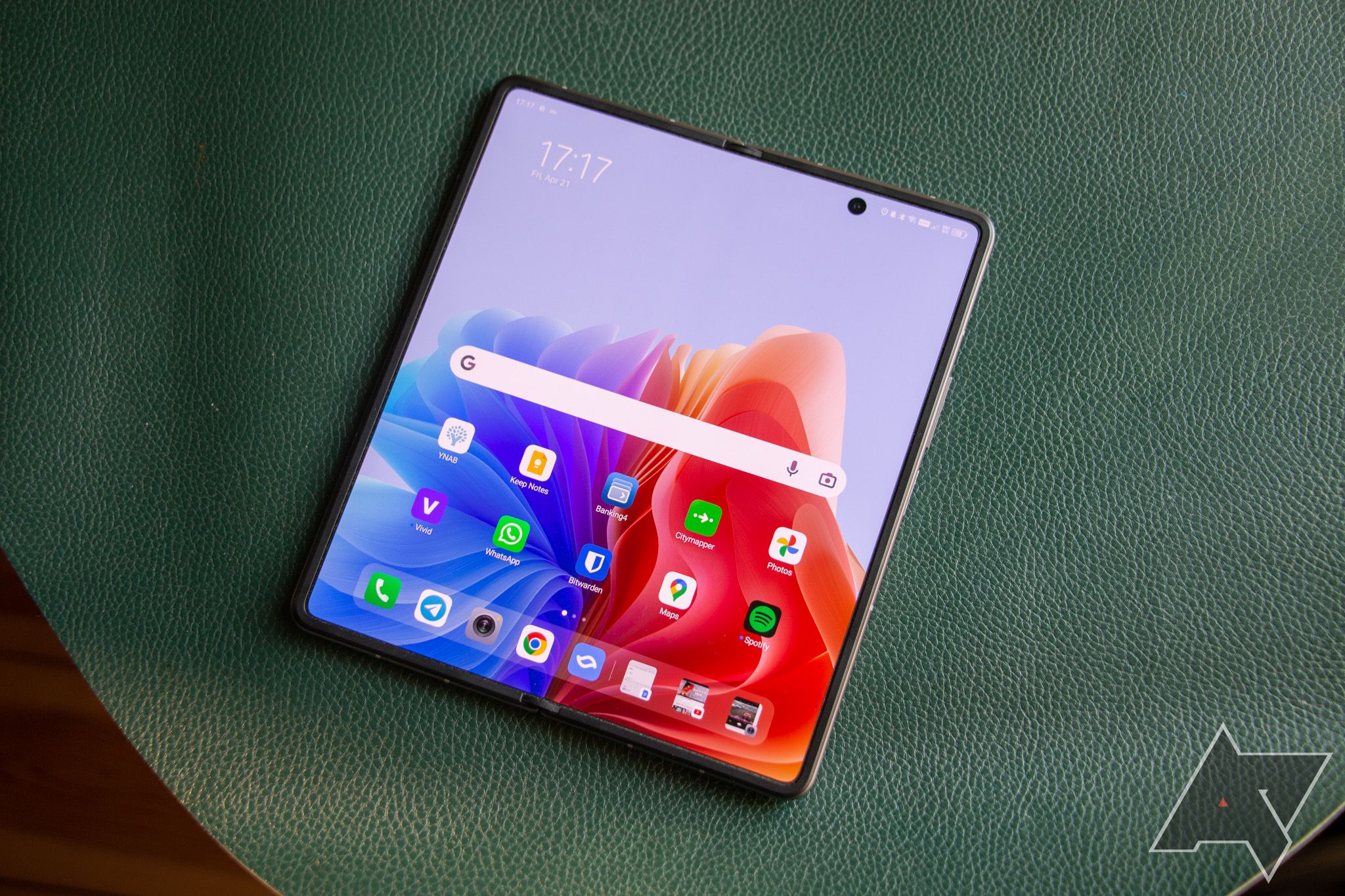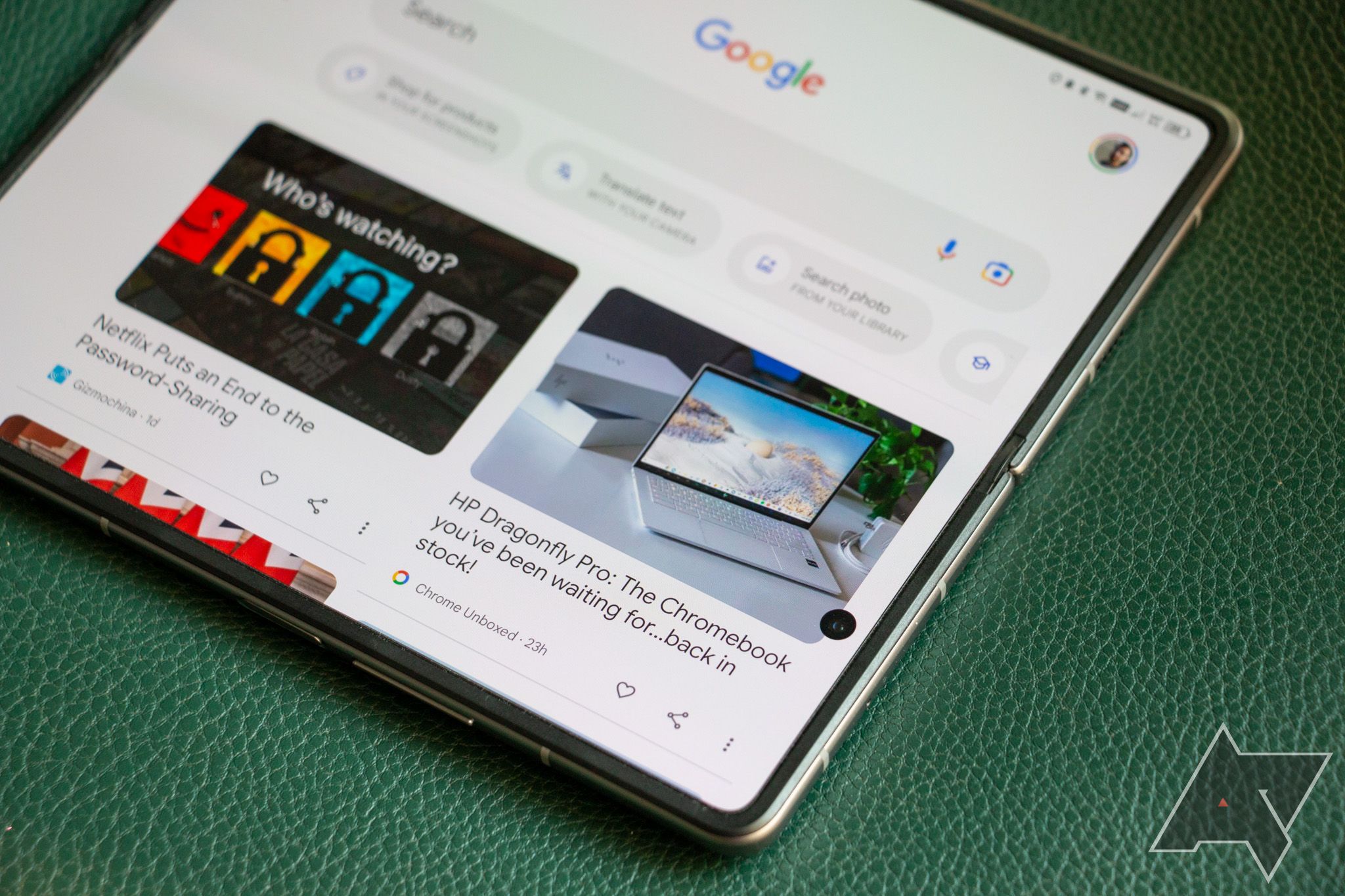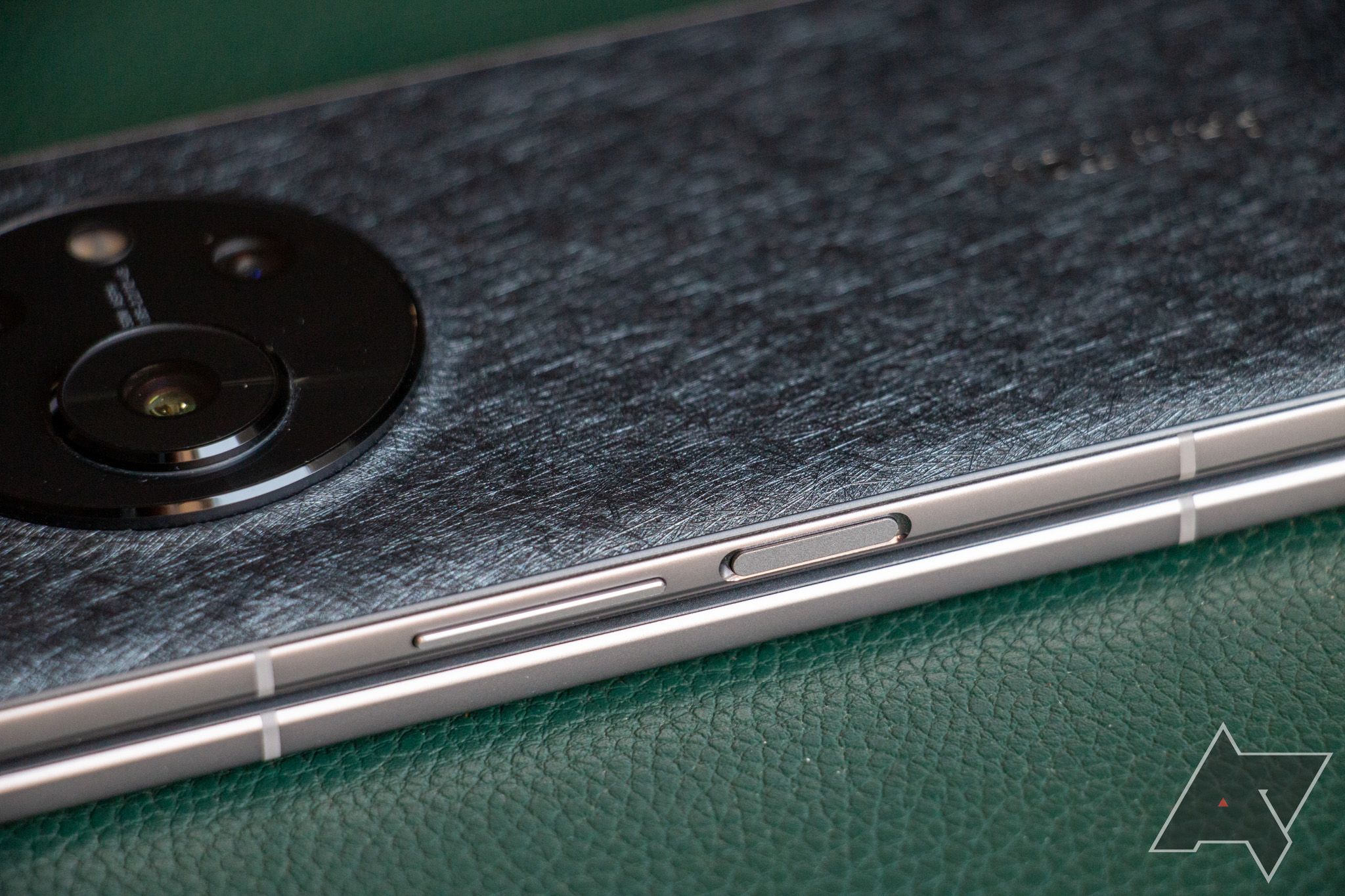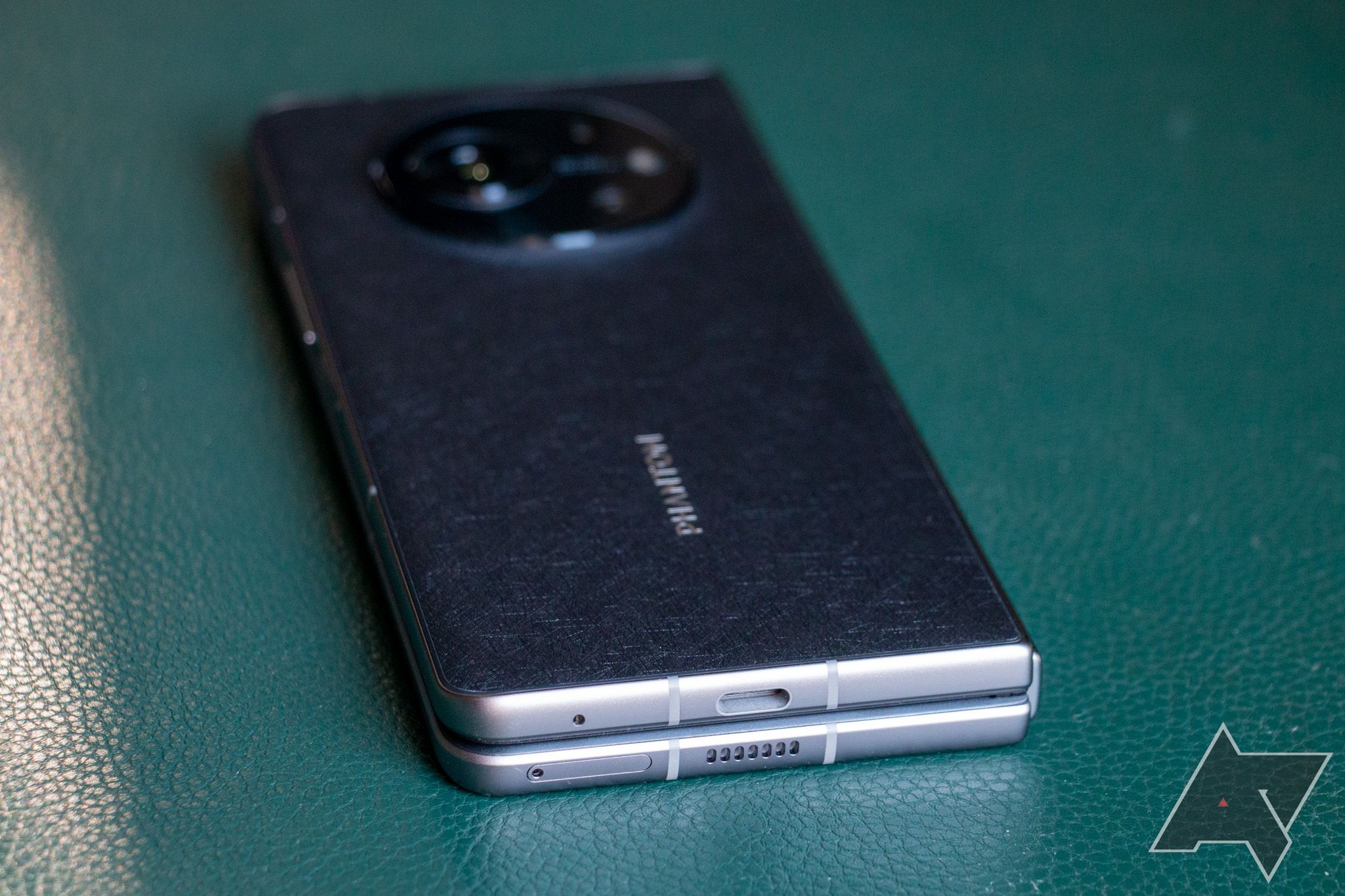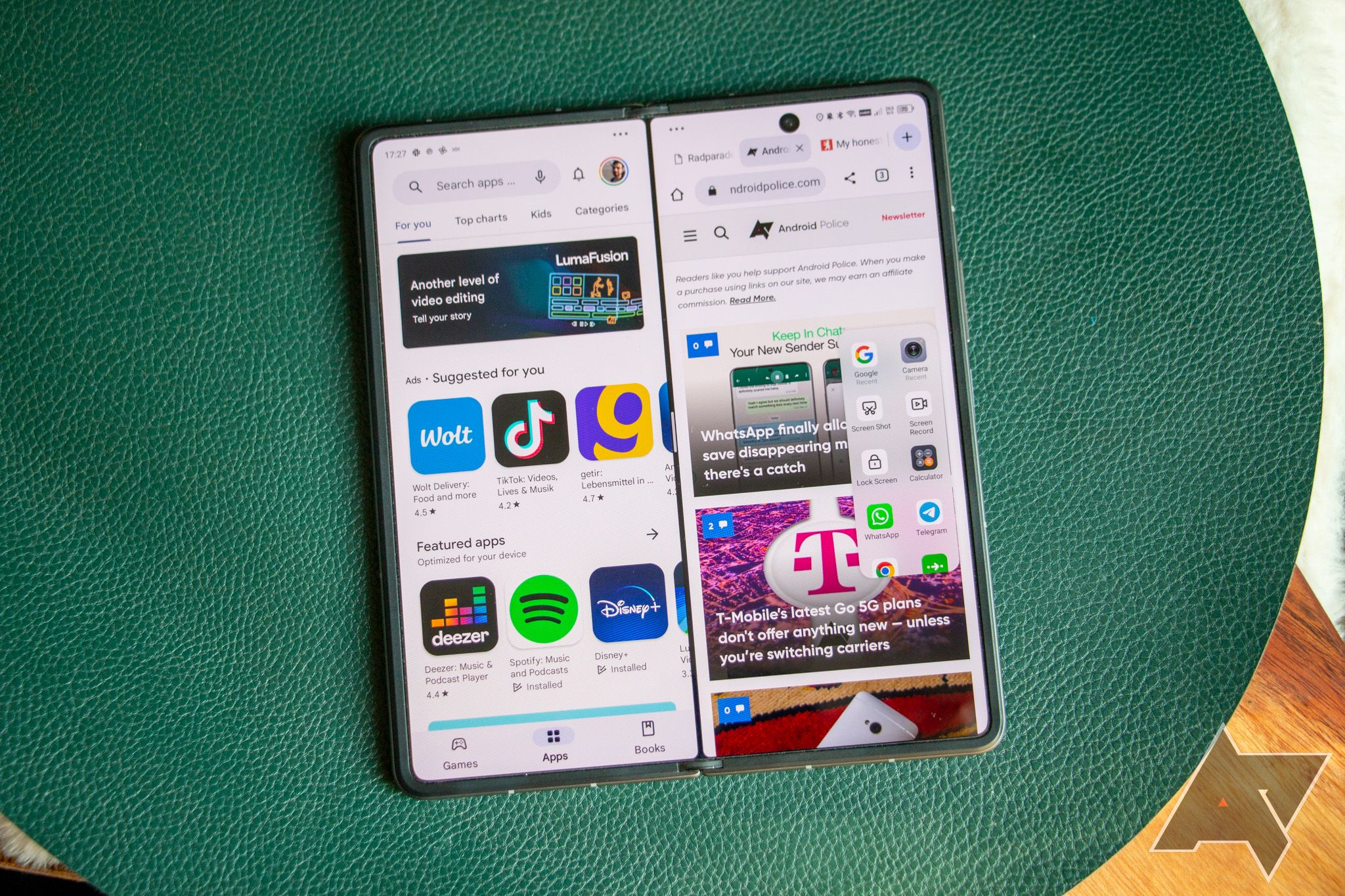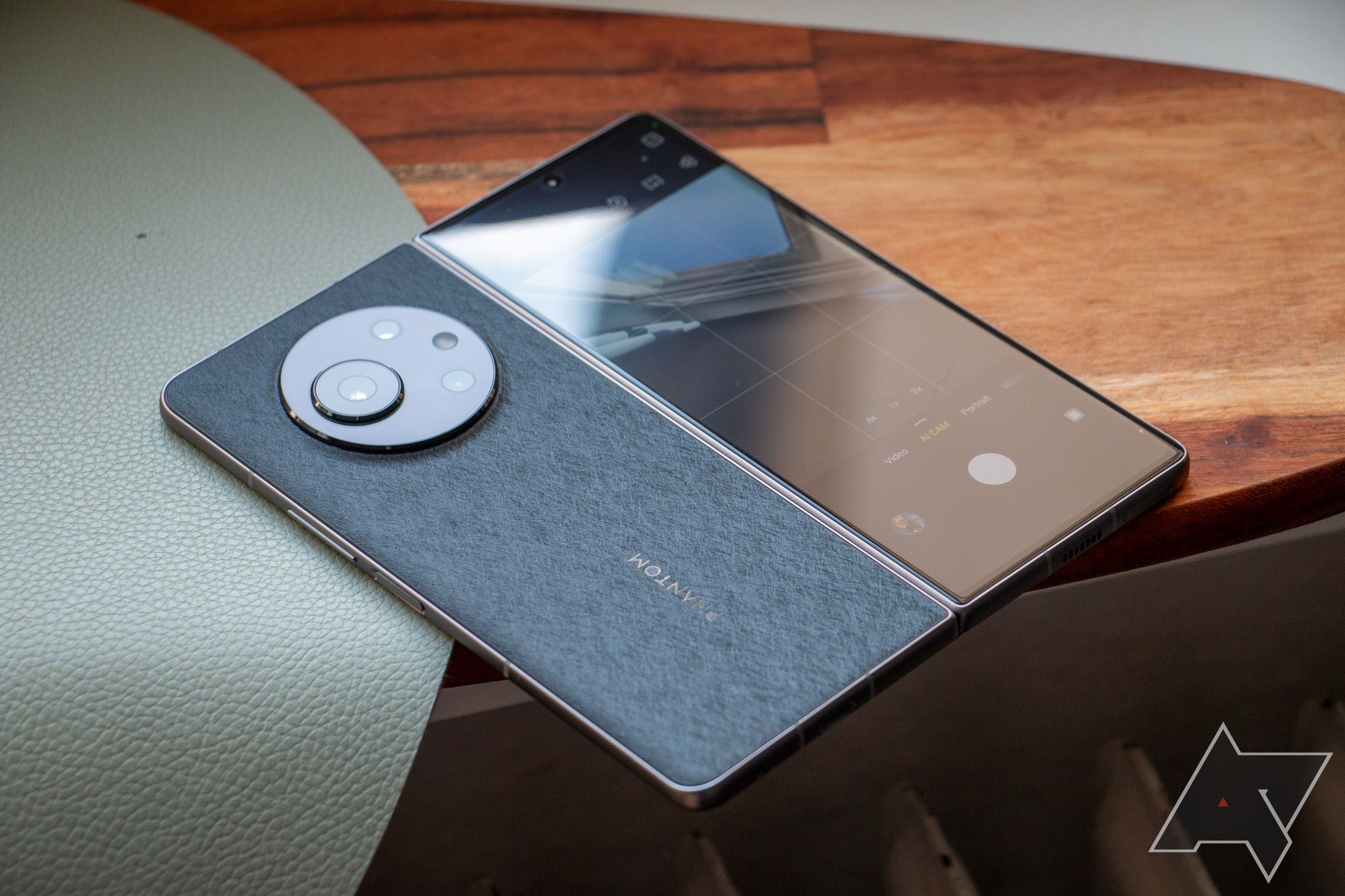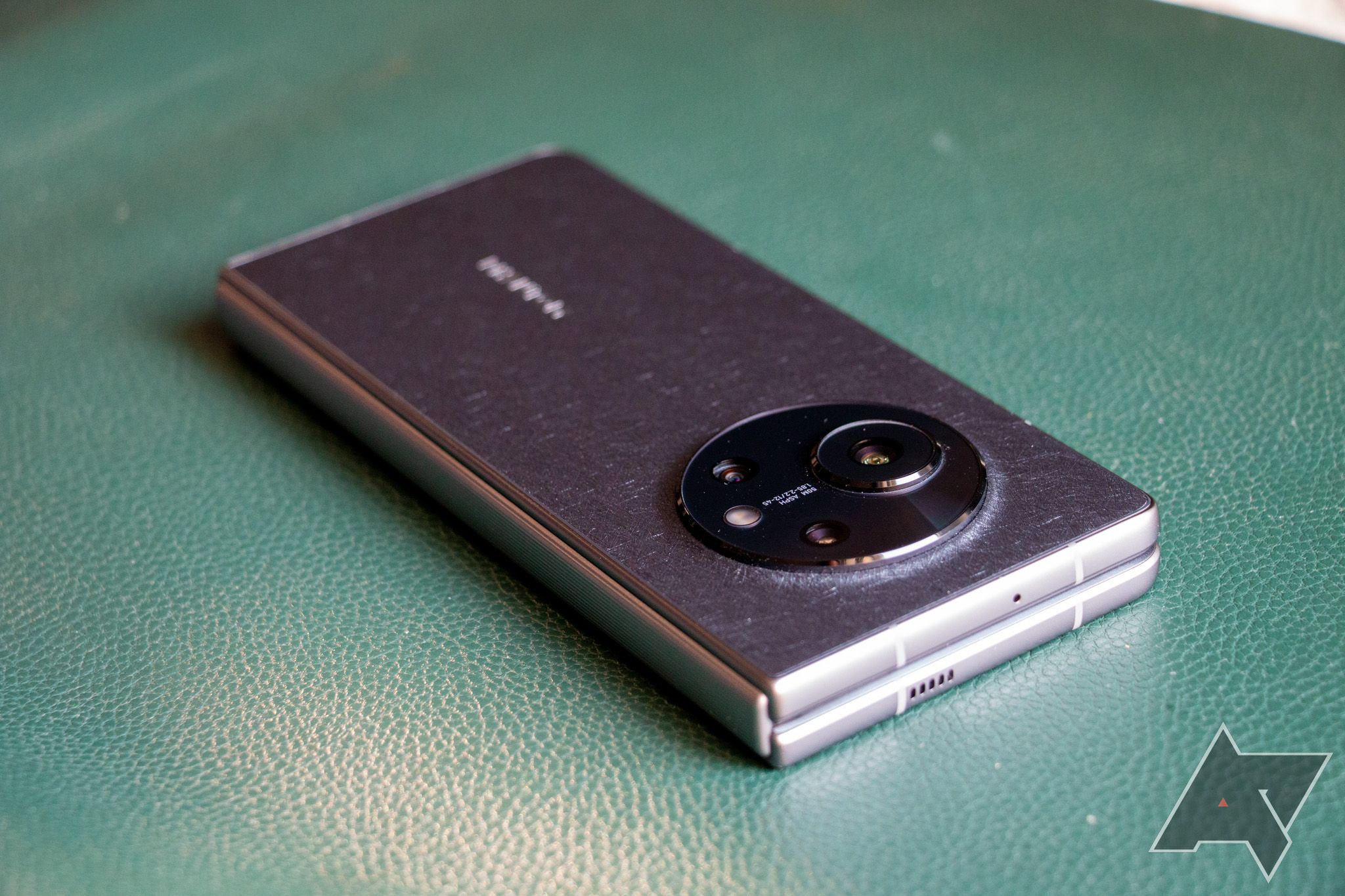Foldables are on their way to becoming mainstream and are among the best phones you can get today. Not too long ago, Samsung had to recall its first-generation Fold due to debris getting under the display, and today, we're at a stage where multiple companies are competing to create both the best and the most affordable folding phones out there. Tecno has also entered this race with the Phantom V Fold, and it tries to differentiate itself from Samsung and others in two key ways: pricing and processor choice.
You see, the Phantom V Fold is the cheapest book-style folding phone to date, though compared to regular phones, it still is anything but affordable. Tecno is selling the Phantom V Fold for about $1,100 overseas — significantly less than what Samsung wants for the Galaxy Z Fold 4. Tecno also went a different route when it comes to its processor of choice. Rather than going for a top-of-the-line Snapdragon processor like the rest of the industry, the Phantom V Fold offers a Dimensity 9000+, MediaTek's flagship offering.
With the Phantom V Fold, it is interesting to see which compromises Tecno had to make to achieve this price point that's much lower than the competition. Does it really feel like a $1,000+ phone, or does it feel decidedly budget?
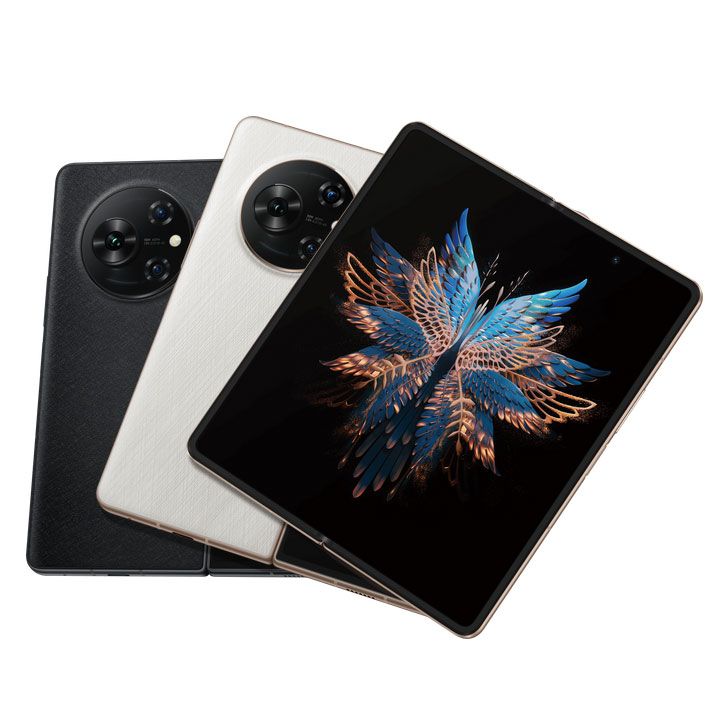
Tecno Phantom V Fold
The Tecno Phantom V Fold is a Samsung Galaxy Z Fold 4 competitor with the high-end MediaTek 9000+ chipset. It comes with a much less pronounced crease and offers 120Hz displays outside and inside.
- SoC
- MediaTek 9000+
- Display
- 7.85" 2296x2000 120Hz OLED primary display, 6.42" 1080x2550 120Hz OLED cover display
- RAM
- 12GB
- Storage
- 256GB, 512GB
- Battery
- 5000mAh
- Ports
- USB-C
- Operating System
- HiOS13 / Android 13
- Front camera
- 16MP inner selfie camera, 32MP outer selfie camera
- Connectivity
- GPS, Wi-Fi, FM, Bluetooth, NFC
- Dimensions
- 159.4 x 71.9 x 14.5 mm folded, 159.4 x 140.4 x 6.8 mm unfolded
- Colors
- Black, White
- The most affordable foldable yet
- Virtually no crease in the tablet-sized inner screen
- Outer screen is easily usable thanks to 21:9 aspect ratio
- The back doesn't attract fingerprints at all
- Included case with kickstand
- Not as sturdy as I would like it to be
- Poor vibration motor
- The software isn't the easiest to navigate
- The cameras are average at best
- Even thicker and heavier than competing foldables
Availability and network
Let’s get the bad news out of the way: Like many other interesting phones, the Phantom V Fold isn’t officially coming to the US. If you’re interested in it, you will have to import it, and even then you’ll have a hard time. The V Fold isn’t compatible with many US bands, as a quick look at Kimovil’s stats reveals. The phone is officially only coming to a few select markets like India. That said, the phone works quite well on my German network here in Berlin.
Design
Like the Samsung Galaxy Z Fold 4, the Phantom V Fold is a book-style foldable, meaning that there is a regular smartphone-sized screen on the outside and a bigger, tablet-like screen on the inside, opening up like a book. Right at first glance, the V Fold’s design offers some advantages over Samsung’s approach.
With an aspect ratio of 21:9, the front screen doesn’t feel cramped at all, and when you fold the Tecno phone, you’ll notice that it doesn’t have any gap to speak of. Thanks to some engineering prowess, the inner screen also barely has any crease. It’s right up there with the Oppo Find N2 Flip. The good first impression is further cemented by the sturdy aluminum frame that wraps around the whole design, complete with a plastic hinge that fits right into the design.
There are some problems with the Phantom V Fold, though. The vegan leather on the back feels significantly cheaper than I imagined. I still prefer it over glass, which is slippery and attracts fingerprints more easily, but it’s nowhere near the level of something like the Vivo X90 Pro. I’m inclined to compare it with papyrus or wax paper more than anything. The thing is that Tecno set itself up for failure here by claiming the back is faux leather. If the company hadn’t called it that, I would probably be perfectly happy with how unique the back feels.
If you’ve seen the Honor Magic Vs before (which you likely haven’t, since it also isn’t available in the US), the Phantom V Fold should look instantly familiar. The general shape and design are strikingly similar, including the curved front display that I dislike on both devices. The Phantom V Fold is just a tad thicker and heavier, though. The similarity is so striking that I suspect that the two manufacturers share some production resources.
Compared to the Magic Vs, I like that the Phantom V Fold added the volume rocker and the power button to the same side of the frame rather than on opposite sides. This means that the power and volume buttons are always on the right side, no matter if you use the V Fold unfolded or not. What concerns me is that the hinge feels less sturdy, though. When the Tecno phone is folded, you can move the top and bottom part of it ever so slightly, making for a concerning crunching sound coming from the hinge. I’m sure this is not good for longevity, though I haven’t noticed any degradation over the time I’ve used it.
The Tecno Phantom V Fold is also one of the heaviest foldables on the market. It weighs almost 300g (10.5 oz), which is an additional weight you particularly notice in one-handed use. The Galaxy Z Fold 4 comes in at only 263g, and we already called that a heavy boy in our review. A regular flagship phone like the Pixel 7 Pro comes in at just 212g.
Last but not least, the greatly reduced crease comes at a cost. The Phantom V Fold doesn’t support mid-fold positions, meaning it can’t properly snap into a Flex Mode position. This Samsung-branded mode allows apps like YouTube or Google Meet to place content on either side of the crease, using it as a natural border and making usage more ergonomic in many situations. You can force the V Fold into a Flex Mode position using its included case by hindering the device from fully folding with the case’s kickstand, but that’s a workaround at best that only works on flat surfaces. Then again, the kickstand itself offers a good alternative to Flex Mode in any case, even if snapping the case on the foldable means making it even heavier and bulkier than it already is.
It’s clear that foldables are still an exercise in compromise, and the Phantom V Fold makes that particularly obvious. However, it’s impressive just how Tecno manages to bring a much lower price to the form factor. Even if I’m not happy with the folding action, the weight, and the back, the Phantom V Fold nails the basics of what makes a book-style foldable a book-style foldable.
Displays
The Phantom V Fold’s exterior display is a 6.4-inch 1080 x 2550 OLED display with an aspect ratio of 21:9. It’s protected by a plastic protector that you can easily pry off. The glass itself under the protector is Gorilla Glass Victus. The most annoying part about this screen is its slight curve on the right side. I already noted that I hate this same design choice on the Honor Magic Vs, but it does make the foldable easier to hold and more symmetrical when unfolded as the back plate also curves to one side only. The miniscule curve thankfully doesn’t get in the way too much, but I still hate the way this makes the phone look. If it wasn’t for the extra thickness and weight, the 21:9 aspect ratio makes the foldable a reliable phone — it’s much less cramped than the extremely narrow screen on the Samsung Galaxy Z Fold 4.
On the inside, a 7.85-inch 2296 x 2000 is offering a tablet-like experience, sheltered by a screen protector and made of Schott UTG (ultra-thin glass). Here, Tecno explicitly recommends leaving on the screen protector, and like with any folding screens, there are the usual warnings about not touching the film with sharp objects or even fingernails. Both the interior and the exterior screens have barely any bezel to speak of.
Like Honor with the Magic Vs, Tecno doesn’t do itself any favors with the placement of the front camera on the interior screen. It lives centered at the top of the right half of the screen, so while it doesn’t get in the way when you use the phone in portrait mode, it cuts right into your content when you use it in landscape mode. Depending on which app you use, you might find yourself flipping the foldable upside down to see the content otherwise hidden by the camera.
This problem could have been easily avoided if Tecno placed the camera in a corner, even if that would come at the expense of a less centered view when you're in a video call. But let’s be real, most people will probably spend less time on video calls than watching movies or reading websites. That said, I’m still glad that Tecno went with this inelegant solution that has the camera cut into the content. Otherwise, you would lose valuable screen real estate when using the phone in landscape mode, as the software would have to emulate a cutout across the whole left or right edge of the screen. I would much rather deal with the occasional cut-off letter than with losing this much space.
Both screens support 10-120Hz and a peak brightness of 1100 nits, which is just enough to properly see your content on a sunny day, though it’s noticeably darker than the flagship phones out there.
Other hardware and what’s in the box
Other than the price, the processor is one of the biggest differentiators in the Phantom V Fold. In contrast to most other foldable makers, Tecno didn’t go with a Snapdragon SoC but instead with the Dimensity 9000+, Mediatek’s flagship processor built on a 4nm process and offering up to 3.2GHz. In everyday life, there is barely a difference between Mediatek and Snapdragon anymore. The only real big difference I noticed to the Honor Magic Vs is that the V Fold needs an extra second or two when switching between displays, but this might just be a matter of optimization rather than a limitation of the processor itself, especially since the phone uses its cameras to determine if it should turn on the outer screen when you fold it or not — a truly very welcome feature.
The processor is accompanied by 12GB of LPDDR5X RAM and 256 or 512GB of UFS3.1 storage, depending on how much you’re willing to pay. It’s not expandable, though there is dual SIM support. The amount of RAM is very much appreciated, and apps stay in memory longer than on many competing phones with similar RAM configurations, which is great to see. A 5,000mAh battery is built in, which can be charged at up to 45W. Further boxes checked by the V Fold are Wi-Fi 6, Bluetooth 6.3, NFC, and USB OTG.
The Phantom V Fold offers a rather finicky fingerprint scanner that’s part of the power button. I find it quite prone to errors, a problem that is thankfully remedied by the optional face unlock feature. Just keep in mind that like on the Pixel, face recognition only works for unlocking the phone, and not as biometric authentication in apps. The fingerprint scanner is also incredibly receptive to every single touch. It makes me fear I will accidentally unlock the device in my pocket and butt-dial someone’s phone number, though this thankfully hasn’t happened so far.
The vibration motor is another point of contention for me. It feels shallow and unrefined, and when you fold the phone, you can feel the motor resonate, making for an unpleasant and cheap-feeling experience. The vibration motor is serviceable for notifications, but really, I tried to turn it off for as many features as possible, like typing — it’s that bad.
Last but not least, the speakers. They’re fine, but they could definitely use a volume boost. I routinely found myself cranking the volume all the way up during any YouTube streaming sessions, which doesn’t leave a lot of wiggle room in case you’re in a loud environment.
In the box, you will find the aforementioned snap-on case (that you can optionally also attach with an adhesive), a 45W charger, a USB-C cable, and the usual SIM card removal tool and warranty information.
Software
The Tecno Phantom V Fold comes with Hi OS Fold 13, based on Android 13. Interestingly enough, there are many similarities to the Honor Magic Vs in this department, too. Instead of a taskbar, Tecno opts for a side panel that you can open by swiping and holding from the side, which often clashes with the back gesture until you get used to it. Apps opened via this panel appear in a floating window. When you use the main screen, you can quickly enter split-screen views by swiping from the top and then selecting your preferred secondary app from a list of all installed apps. I would still love to see the regular taskbar first introduced in Android 12L rather than this, just for consistency's sake across the Android ecosystem.
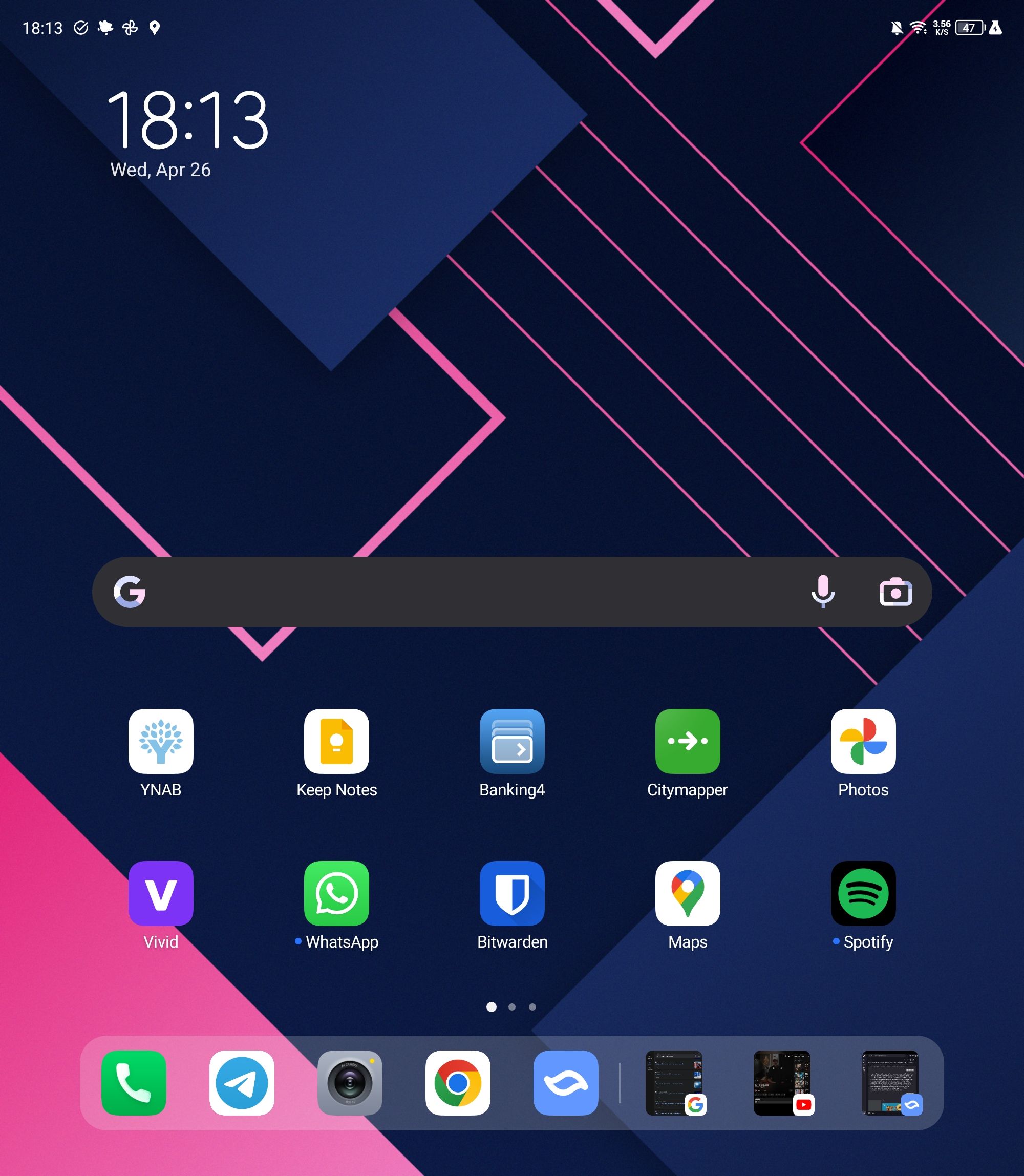
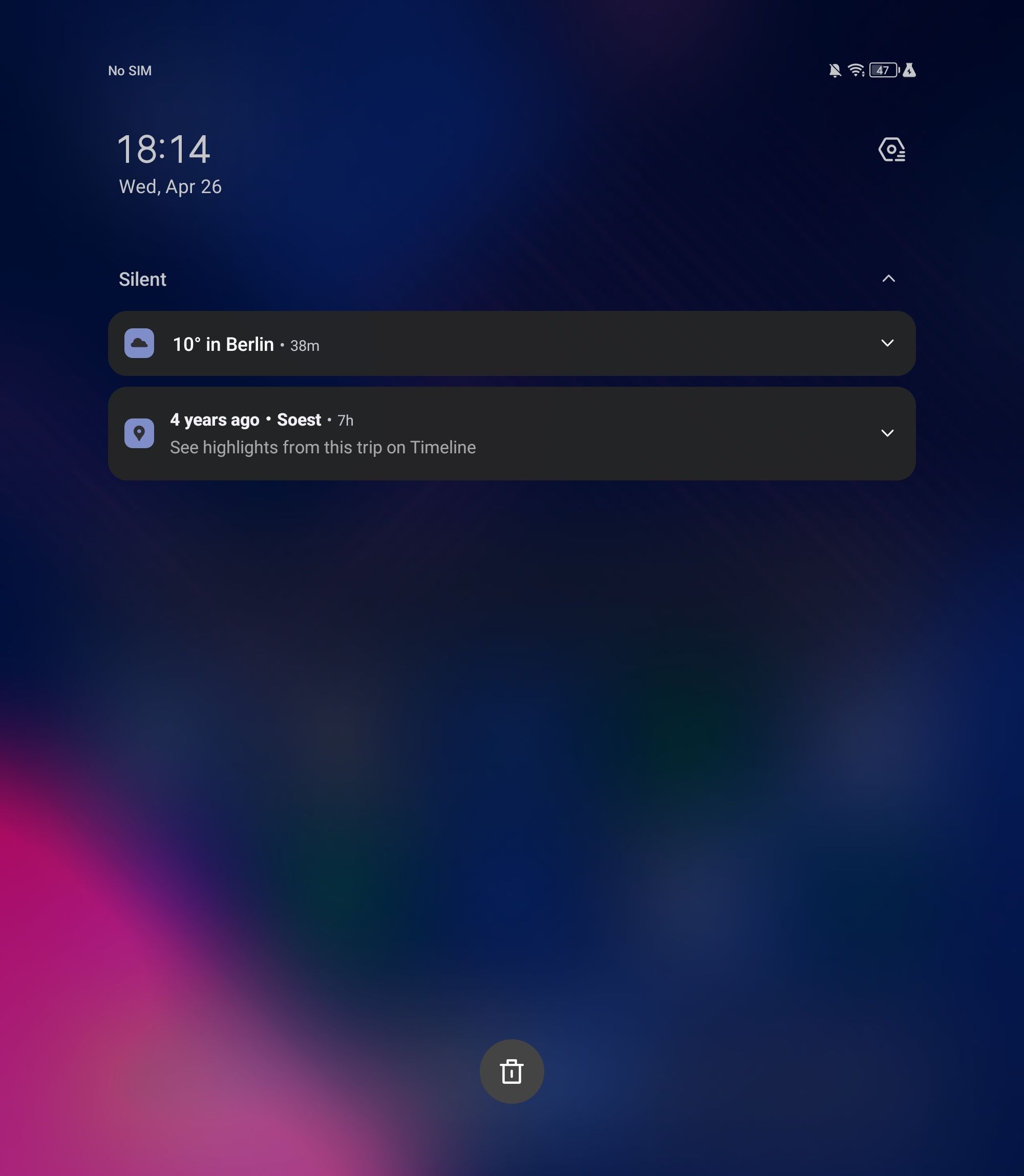
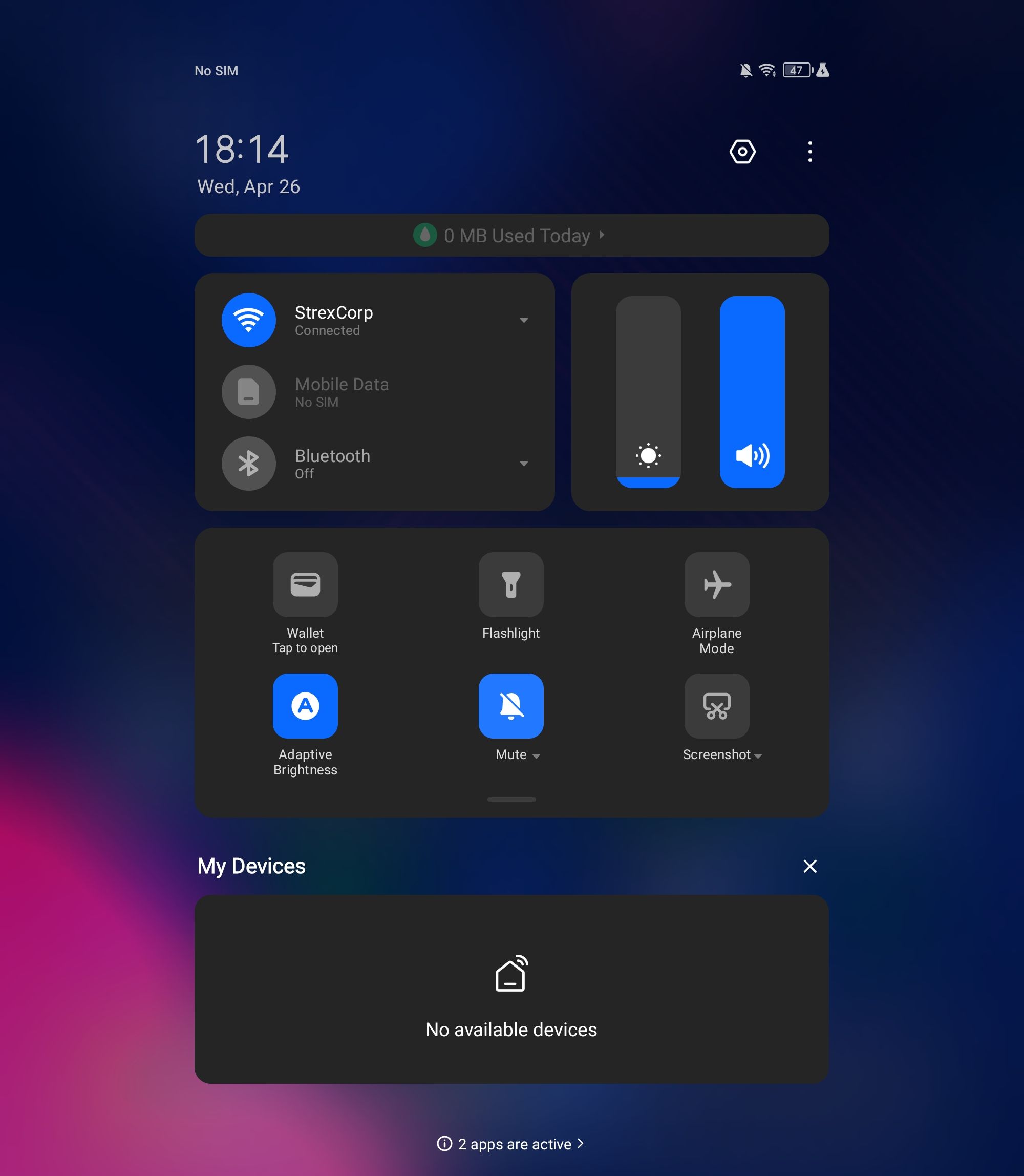
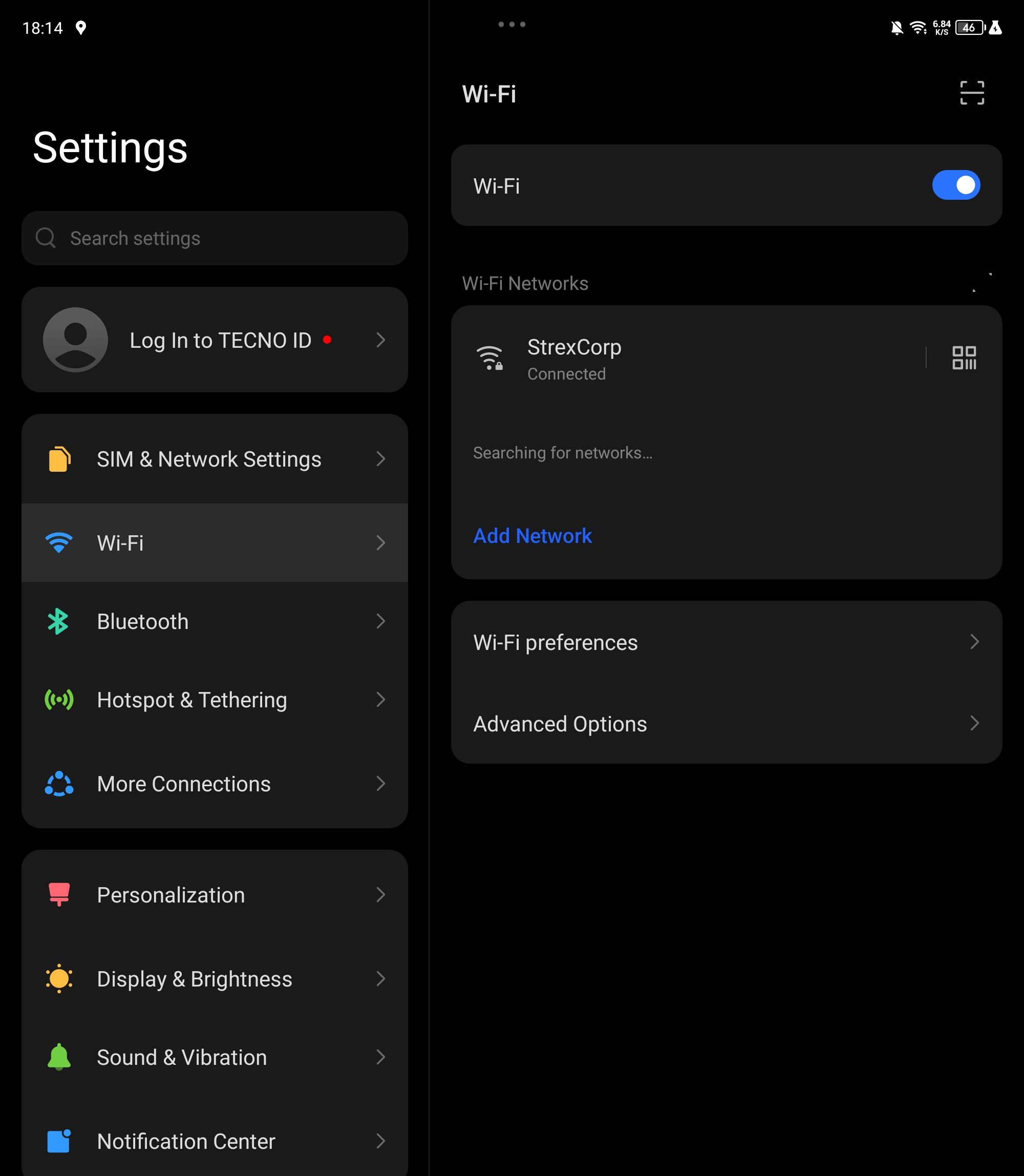
When you first set up the phone, you notice that it isn’t meant for European or American markets. The United States and many EU members are missing from the Country/Region selector, and the English translations are rough in many places. Since the foldable is sold outside of China, it thankfully still offers Google services, giving you easy access to all the apps in the Play Store you could ask for.
There are a few more quirks. During the face unlock setup, there was just a black screen rather than a look at my face, which looked like a bug. Sometimes, the pause button in the media player refused to work for me, particularly with Spotify. Lift to wake, which is activated by default, is rather buggy and way too easily activated when just walking with the phone in your hands. The phone also thinks it’s very important to tell you that it intelligently switches between 4G and 5G to preserve battery life in a non-dismissible notification.
On the other hand, there are some thoughtful additions. I particularly love the option to automatically end silent mode after one, two, four, or eight hours right within the volume slider menu, making it easy to get a full night’s sleep or an uninterrupted workday without bothering with any fancy schedules or automations. Tecno also added a volume slider to the quick settings options, which makes it easy to adjust the volume when the physical buttons are obstructed. That’s something you can’t avoid when you use the kickstand from the included case. The launcher also offers tons of customization with different gestures and an option to swipe to switch between folders. It’s just a bummer that the launcher only supports 5x5 and 5x6 layouts, and no 4 column options. I personally prefer this, and I was able to activate it on virtually any device I recently reviewed.
Overall, I’m split about whether to like or dislike Tecno’s skin. The quality-of-life improvements and its quirks are mostly balanced, though.
Cameras
When it comes to cameras, foldables are usually not as great as regular phones, and with the Phantom V Fold, this couldn’t be truer. Let’s first take a look at the specs, though. The circular camera array on the back is dominated by the 50MP f/1.85 primary camera, flanked by a 50MP f/1.98 telephoto portrait camera that offers a 2x optical zoom. Both support autofocus, but none of them come with OIS. Last, but not least, there is a 13MP f/2.2 ultra-wide with a 120-degree field of view. Interestingly, the Phantom V Fold also offers two different front cameras on the outer screen and the inner screen. While the foldable screen has to make do with 16MP, the exterior offers a 32MP camera.
In daylight, the Phantom V Fold is perfectly adequate and produces some great shots. The shutter reacts decently fast (though it isn’t as instantaneous as on the Xiaomi 13 Pro or Vivo X90 Pro), and the camera can deal with challenging lighting conditions like when shooting against the sun. HDR is decent, with the software easily avoiding blown-out sections. The one area the setup struggles with in good lighting is zoom, which makes sense given that it can only zoom 2x optically.


2x or 3x zoom is passable, but try to go closer than that and you're in for trouble
Things look different in worse lighting conditions, though. Once you go inside, the color science is slightly worse, with the camera tipping towards oversaturating. When you shoot portraits inside, you also need to make sure that your subjects don’t move too much. Otherwise, you’re in for blurry faces. The lack of optical image stabilization surely doesn’t help the case.






Night and indoor photograpyhy is hit or miss depending on how active your subject is
Night photography, or Super Night, as Tecno calls it, is surprisingly solid, but this is again only the case when you’re in a place where you can hold the phone still for a few seconds. That makes for some stunning night architecture photos, but not such a good performance when you want to capture moving subjects.
A gallery of sample shots for you to scroll through
Being a foldable, the Tecno Phantom V Fold also supports the usual multi-screen tricks. When unfolded, you can use the cover screen to see a preview of selfies you take with the main cameras. And despite the V Fold’s inability to snap into mid-fold positions, its camera surprisingly supports a half-folded mode where it will display photos you’ve just taken on one side and the viewfinder on the other.
Battery life
The battery life on the Phantom V Fold is phenomenal during everyday usage. I took the phone on a trip to Sweden and Denmark (as some of you may have noticed in the camera section above), and it hasn’t prematurely died on me on any given day. That’s despite using heavy usage for navigating, photos, reading, and video watching during the various trips throughout the days, with about five to six hours of screen-on time.
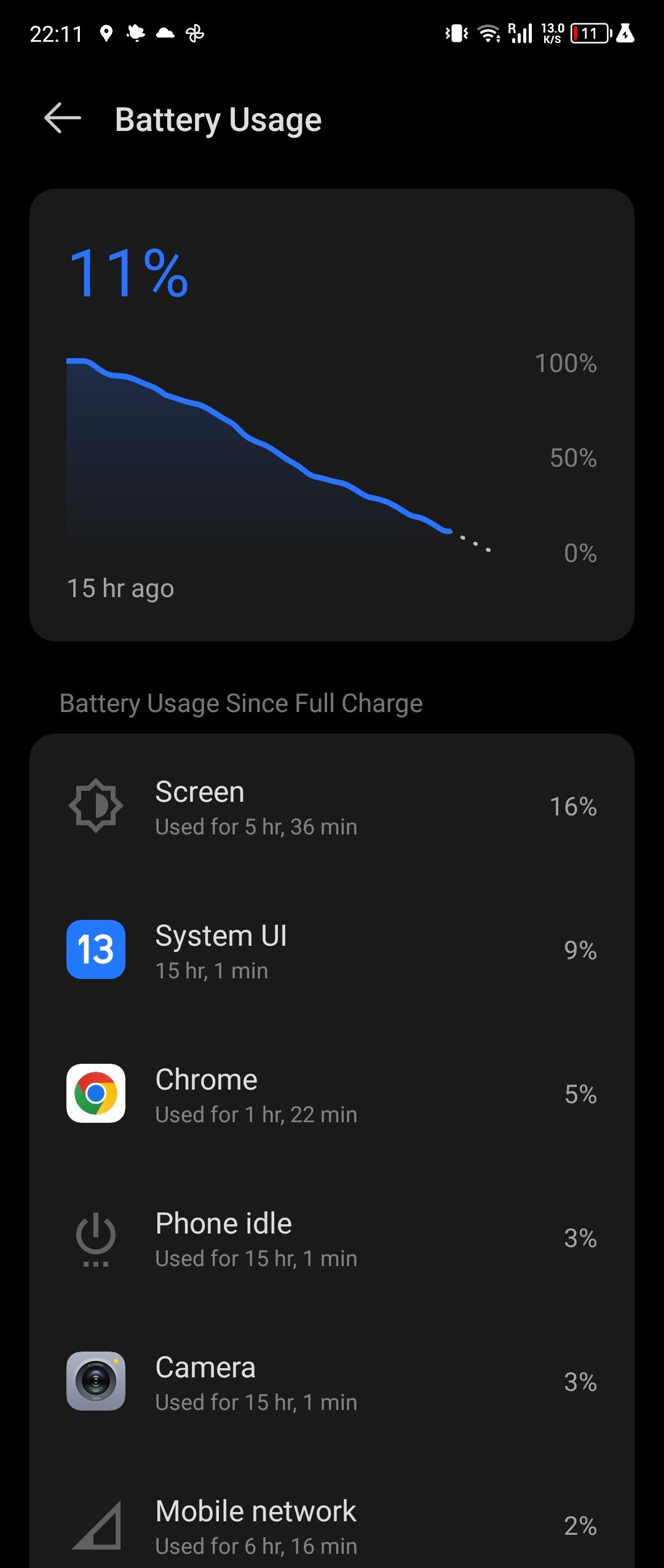
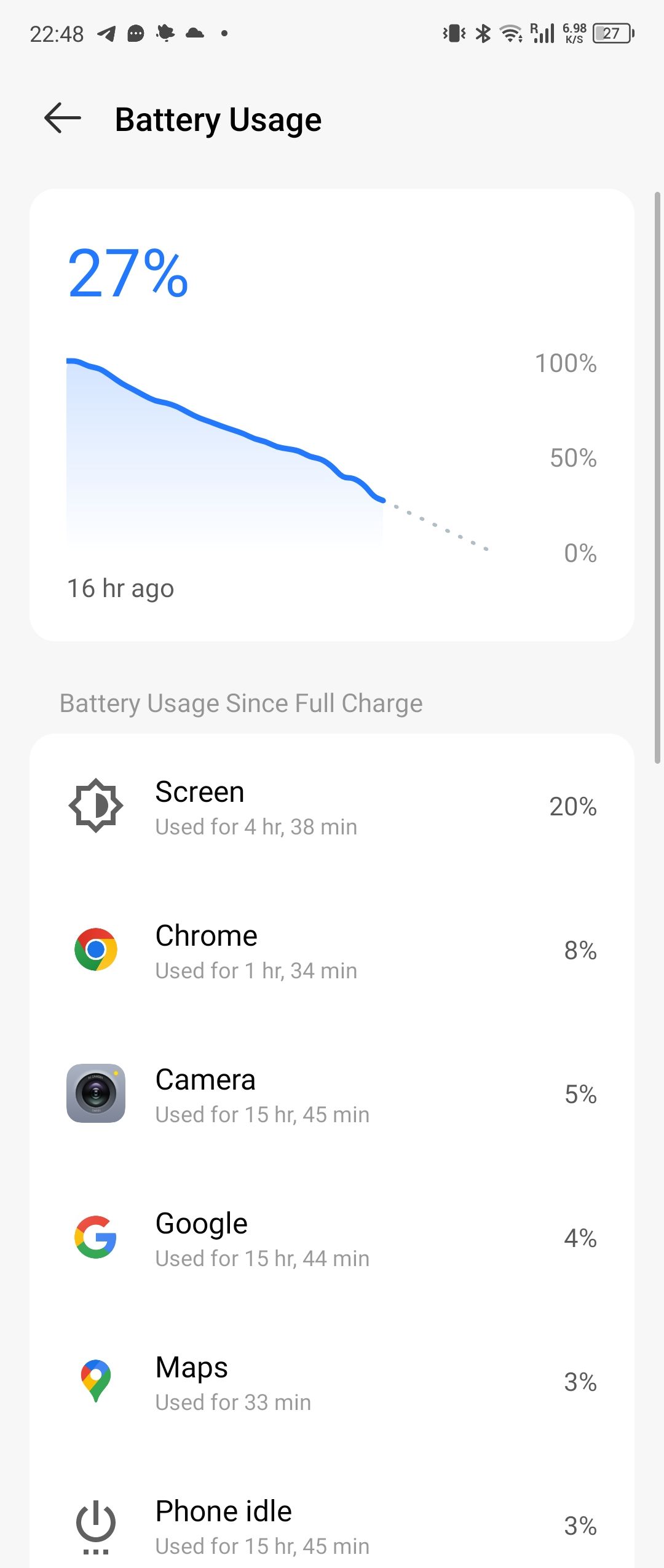
The only time when battery life takes a serious hit is when gaming on the big screen, which is understandable. You’ll be lucky to get more than two hours of intensive gaming out of the thin folding phone. It’s still great to be able to have a much bigger screen on you for a gaming session while you’re on the go.
Should you buy it?
If you don’t want to spend $1,500 and more for a phone but you’d still like to have a book-style foldable, the Tecno Phantom V Fold is the phone for you. It may not offer the same premium experience that a Samsung Galaxy Z Fold 4, an Honor Magic Vs, or an Oppo Find N2 would give you, but it nails the basics. If you consider that the phone is over $500 less than its competitors and only struggles with the occasional software quirks, the average camera setup, and below-average build quality, you wonder how Tecno managed to build this thing at the price. I was genuinely expecting worse going into this review, and I’m surprised how good it is compared to the much pricier competitors.
However, as I mentioned before in my Magic Vs review, this is the year of the foldables. Google is all but confirmed to launch the Pixel Fold during Google I/O, Samsung will have a serious upgrade in store in August with the Galaxy Z Fold 5, and we might just see OnePlus release a folding phone of its own in the US. The market, previously single-handedly owned by Samsung, is getting crowded, and if you can wait just a few more months, you might soon have a lot more choices at all kinds of price points. That said, the Phantom V Fold is the most affordable option you can get right now, and if that’s what you want, you know what to get.

